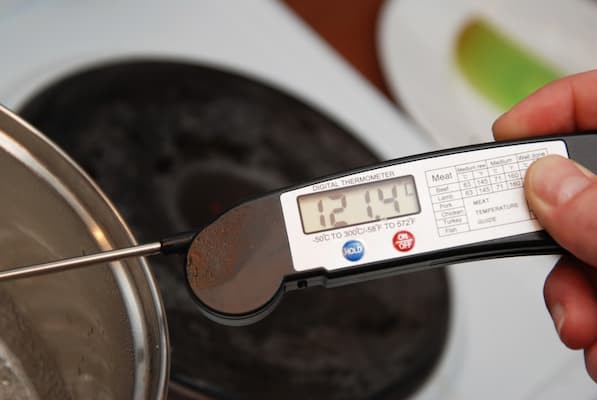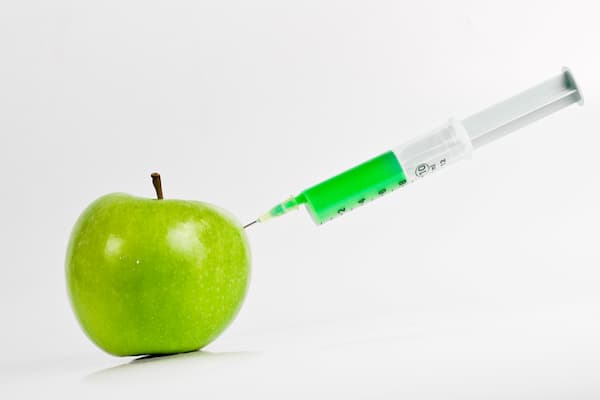
12 October, 2023
Candy Chemistry: Unveiling the Science of Sweets
Candies and confections are more than just delightful treats for our taste buds. Behind every delectable bite is a fusion of science, particularly chemistry. Have you ever wondered why some candies are crunchy while others are chewy? Or why do certain sweets have flavours that linger, tantalising your palate long after they're gone? The answers lie in the intricate science of candy-making. Let's embark on a sweet journey into the world of candy chemistry.
Sugar Crystallization: The Backbone of Candy

Sugar, in its various forms, is the foundation of most candies and confectionery. When sugar is dissolved in water and heated, it forms a syrup. As this syrup cools, sugar molecules come together to form crystals. The size and structure of these crystals determine the texture of the candy.
Large Crystals - These are formed by several factors:
- Cooling Rate: Slow cooling of the sugar syrup promotes the growth of large crystals. It gives sugar molecules ample time to find each other and organize into bigger clusters.
- Stirring: Gentle stirring after the syrup has cooled slightly can encourage the formation of larger crystals. The act of stirring provides 'nucleation sites' or starting points for crystal growth.
- Concentration of the Syrup: A highly concentrated sugar solution can result in fewer but larger crystals, as there’s less water to interfere with the crystallization process.
Candies with larger sugar crystals tend to be grainy, like in fudge. While the term "grainy" might sound unappealing in many culinary contexts, it's often a sought-after quality in candy-making, especially for fudges and certain pralines.
The graininess provides a unique mouthfeel, which, when combined with the candy’s sweetness, creates a multi-dimensional eating experience. Large crystals give candies a rustic, homemade look, which can be more appealing to those who prefer artisanal or traditional sweets. Also, grainy-textured candies like fudge can be easily combined with other ingredients, such as nuts or dried fruits, which complement their texture.
Small Crystals - Small sugar crystals, as the name suggests, are tinier in size, but their influence on texture is profound.
Factors that encourage the formation of small crystals include:
- Rapid Cooling: Speeding up the cooling process of the sugar syrup limits the time sugar molecules have to find each other. This results in forming many small crystals instead of fewer large ones.
- Agitation: Vigorous stirring or beating of the cooling syrup can induce the formation of smaller crystals. Continually disturbing the solution prevents sugar molecules from forming larger clusters.
-Interfering Agents: Ingredients like corn syrup or cream of tartar act as interfering agents, hindering the sugar molecules from coming together and forming large crystals. They ensure that the resulting crystals remain small in size.
Like fondants, candies that require a smooth, creamy texture have tiny sugar crystals. While they may be microscopic in size, small sugar crystals significantly impact confectionery. They create a seamless, velvety texture in candies, offering an indulgent sensory experience.
Ones with small crystals have a glossy, shiny appearance, making them visually enticing. The smooth texture of such confectionery allows for easy layering or coating with other ingredients, be it chocolate or a fruit glaze.
In the intricate ballet of candy-making, small sugar crystals play a pivotal role in choreographing the dance of textures. Though often unnoticed by the casual observer, their presence is fundamental to crafting some of the most beloved and elegant confections. Whether it's the softness of caramel or the luxurious feel of a fondant, small sugar crystals ensure every bite is perfect.
No Crystals - Hard candies, such as promotional lollipops, are made by preventing sugar crystallization altogether. Controlling crystallization is crucial in candy-making. The absence of sugar crystals results in clear, translucent candies that allow light to pass through, giving them a characteristic sheen and clarity. The result is a solid, smooth, and glass-like candy without sugar crystals interfering with the texture.
Factors that prevent the formation of sugar crystals include
- High Cooking Temperatures: When sugar syrups are boiled to higher temperatures, it ensures complete sugar dissolution, reducing the chances of crystallization upon cooling.
- Use of Interfering Agents: Corn syrup, acid, or fats, when introduced, can interfere with the sugar molecules, hindering their ability to form crystals.
- Avoiding Agitation: Unlike candies where we want small crystals, the syrup must not be stirred once it starts boiling. Disturbing the solution might encourage unwanted crystallization.
The absence of sugar crystals paves the way for a host of popular confectionery:
- Hard Candies: These are often clear, brightly coloured, and can be flavoured with anything from fruit to spices.
- Brittles: Nut or seed brittles have a glassy texture punctuated only by the inclusions, making them a crunchy delight.
- Toffees: While some toffees might have tiny sugar crystals for a certain mouthfeel, many versions, especially the glossy ones, have no sugar crystals.
The charm of no-crystal candies isn't just their visual appeal but a host of other attributes: From the snap of brittle to the smooth break of hard candy, the range of textures is varied. Without sugar crystals, which can sometimes draw moisture and make candies "sweat," these candies often have a longer shelf life. Their clarity and neutrality make them perfect canvases for various flavours, colours, and inclusions.
They shine as translucent jewels, celebrated for their clarity and distinct textures. Mastery in preventing crystallization is a testament to the skill of a seasoned confectioner. So, the next time you admire a clear hard candy or revel in a brittle snap, remember the artistry that ensured not what was added but what was artfully kept out: the sugar crystals.
Temperature: The Heat of the Matter

Temperature plays a pivotal role in candy-making. It affects both the concentration of the sugar syrup and the crystallization process. Candies can be broadly classified based on their required cooking temperatures:
- Soft Ball Stage (235°F - 240°F): The syrup is used for soft candies like fudge and pralines at this temperature.
- Hard Ball Stage (250°F - 265°F): Syrups heated to this range yield chewy candies like nougat.
- Soft Crack Stage (270°F - 290°F): This stage is for taffy and butterscotch.
- Hard Crack Stage (300°F - 310°F): Hard candies like lollipops and brittle are made at this temperature.
Flavour Extraction: A Molecular Dance

Flavour is more than just taste; it's an experience. The extraction of flavours, whether they are from fruits, spices, or herbs, involves the release of molecules that our taste buds and olfactory systems detect. Many candies use natural or synthetic flavour compounds that are often volatile. These compounds are introduced at specific stages during candy-making to ensure they don't evaporate and lose their potency.
Aside from sugar, candies contain various ingredients that influence their taste and texture:
- Acids: Acids are a fundamental component in various confectionery items, primarily because they offer a unique tangy taste that complements the overwhelming sweetness of candies. But their role isn't restricted to just flavour; they also significantly impact the candy's texture and structure.
The first and foremost reason for adding acids like citric acid or tartaric acid to candies is to provide a tart or sour taste. This sourness offsets the sweetness of sugars and creates a balanced flavour profile. When you consume sour candies like gummy worms or sour belts, the puckering sensation and tangy burst of flavour are primarily because of these acids.
Apart from flavour, acids play a technical role in candy-making. Sugar crystallization is a critical process in creating certain confections. Whether it's a soft, chewy caramel or a hard, crunchy candy, controlling sugar crystallization determines the texture and mouthfeel of the end product. When an acid is added to the sugar syrup during the candy-making process, it interferes with the regular pattern of sugar crystallization. Doing so can prevent the formation of large sugar crystals, leading to a smoother texture in candies. This is especially crucial for confections that require a consistent, non-grainy texture.
The acidic nature of these ingredients can also help in preserving candies. Acids can lower the pH of the candy, making it less hospitable for microbial growth. This property ensures a longer shelf life and can enhance the product's overall safety.
The reaction between acids and other ingredients can produce the desired outcomes in certain candies. For instance, when acids are combined with baking soda (an alkali), they produce carbon dioxide gas. This reaction is the basis for "fizzy" or "effervescent" candies that seem to fizz and pop in your mouth.
It's worth noting that while citric acid and tartaric acid are often added in their purified forms, they are also naturally present in various fruits. Citric acid, for example, is abundant in citrus fruits like lemons and oranges, while tartaric acid is found in grapes. Therefore, fruit-based candies might inherently possess these acids even if they aren't separately added during production.
- Fats: Fats are an indispensable component in many candy recipes, contributing not only to flavour but also to texture, mouthfeel, and overall palatability. When discussing fats in candies, ingredients like cream, butter, and oils come to mind. These fats are crucial for achieving the creamy, melt-in-your-mouth experiences many associate with indulgent confectionery.
The primary reason for including fats in candies, particularly cream and butter, is to impart a rich, full-bodied flavour. These fats provide a smooth, creamy consistency, enhancing the overall eating experience. The mouthfeel - that silky sensation when a piece of chocolate or caramel melts on your tongue - is significantly attributed to the fat content.
In candy-making, the control of sugar crystallization is vital in determining the end texture of the confection. Fats, like cream and butter, play a pivotal role in this aspect. When fat is introduced into the sugar mixture, it coats the sugar particles, preventing them from coming together and forming large crystals. This results in candies that have a smoother, more refined texture. In treats like fudge or creamy caramels, the presence of fats is what prevents them from becoming too grainy or crystalline.
While fats lend a soft, creamy consistency, they also help maintain the structural integrity of candies. For instance, cocoa butter ensures that chocolate remains solid at room temperature but melts beautifully when consumed. Moreover, fats can act as an emulsifier, helping to blend and stabilize other ingredients, ensuring that the candy has a uniform consistency.
They can extend the shelf life of candies. They act as barriers to moisture, preventing candies from becoming stale or soggy. This is especially crucial for candies that need to retain their crunch or chewiness over time.
While cream and butter are popular fat sources in candies, many others exist. Cocoa butter is essential for chocolate-making, while coconut oil might be used in vegan or tropical-flavoured candies. Nuts, which contain natural oils, also contribute to the fat content in nutty confections. The choice of fat can influence not only the texture and flavour but also the nutritional profile and suitability for specific dietary needs.
- Gelatin and Pectin: These are natural hydrocolloids frequently used in the confectionery industry. Both are gelling agents, but they have distinct sources and properties that influence their roles in candy-making. Regarding gummy candies, jellies, and similar treats, gelatin and pectin are central to achieving the desired textures and mouthfeel.
1. Sources and Composition:
- Gelatin: Derived primarily from animal collagen, gelatin is a protein obtained by boiling skin, tendons, ligaments, and bones with water. It's mostly sourced from pigs or cows. This protein-based nature gives gelatin its unique melt-in-the-mouth characteristic, contributing to a smooth, enjoyable eating experience.
- Pectin: Pectin is a plant-derived polysaccharide, found in the cell walls of fruits, especially apples and citrus fruits. It is a carbohydrate, unlike the protein-based gelatin, and thus has a different molecular structure and gelling mechanism.
2. Gelling Properties:
Gelatin: When dissolved in water and cooled, gelatin forms a gel. The strength and elasticity of this gel make it perfect for gummy candies. Gelatin-based candies often have a melt-in-the-mouth feel due to the protein's thermally reversible nature, which solidifies when cooled and melts when heated.
Pectin: Pectin forms gels in the presence of sugar and acid. The resulting gel is thermo-irreversible, meaning it won't melt with heat once set. Pectin-based jellies tend to have a slightly different mouthfeel than gelatin-based ones – they can be a bit firmer and less melty.
3. Applications in Candies:
Gelatin: Predominantly found in gummy bears, marshmallows, and other chewy candies. Its ability to produce a wide range of textures, from soft marshmallows to firmer gummies, makes it versatile in the candy industry.
Pectin: Often used in fruit jellies, jams, and marmalades. Pectin provides a fruit-like consistency and is commonly preferred for vegan candies since it's plant-based.
4. Dietary Considerations:
Gelatin: As it's derived from animals, it is unsuitable for vegetarians, vegans, or certain religious groups that might avoid pork or beef derivatives.
Pectin: Being plant-based, pectin is a preferred choice for vegetarian and vegan confections. It's also kosher and halal, making it universally acceptable.
5. Health Aspects:
Gelatin: Contains amino acids and can be considered a source of protein, though not a complete one, as it lacks tryptophan.
Pectin: Is a source of dietary fibre and has been researched for its potential health benefits, including its role in improving gut health and lowering blood cholesterol levels.
Both gelatin and pectin play crucial roles in the world of candies, influencing the texture, chewiness, and overall eating experience of various treats. Their distinct properties cater to different consumer needs and preferences, ensuring there's a gummy or jelly out there for everyone. As confectioners continue to innovate, the applications and formulations of these gelling agents will likely expand, offering even more delightful candy varieties in the future.
In Summary
The world of candy is a sweet symphony of chemistry, with each ingredient and process playing a vital role in creating the final treat. The next time you savour your favourite candy, take a moment to appreciate the intricate dance of molecules and the science that makes it all possible. It's a delightful blend of art and chemistry; there's nothing sweeter.
The Confectionery Only Team
